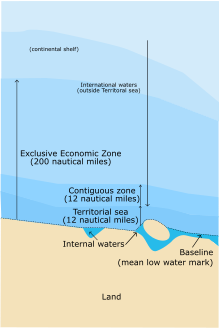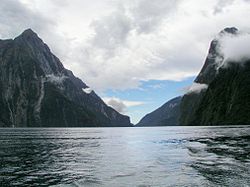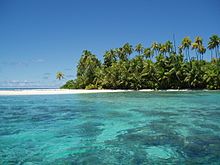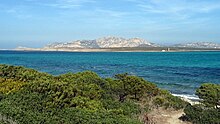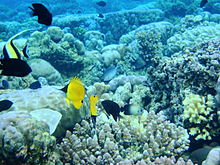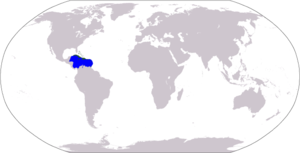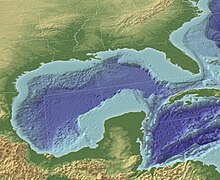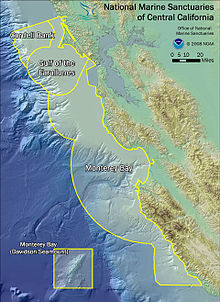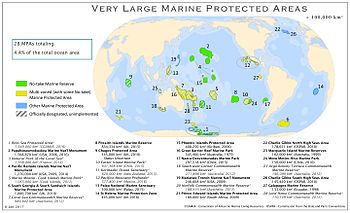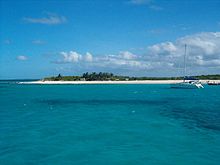An organization chart for the United States Coast Guard shows the hierarchy of managerial roles in that organization.
Management (or managing) is the administration of an organization, whether it is a business, a not-for-profit organization, or government body. Management includes the activities of setting the strategy of an organization and coordinating the efforts of its employees (or of volunteers) to accomplish its objectives through the application of available resources, such as financial, natural, technological, and human resources. The term "management" may also refer to those people who manage an organization.
Social scientists study management as an academic discipline, investigating areas such as social organization and organizational leadership. Some people study management at colleges or universities; major degrees in management include the Bachelor of Commerce (B.Com.) Bachelor of Business Administration (BBA.) Master of Business Administration (MBA.) Master in Management (MScM or MIM) and, for the public sector, the Master of Public Administration
(MPA) degree. Individuals who aim to become management specialists or
experts, management researchers, or professors may complete the Doctor of Management (DM), the Doctor of Business Administration (DBA), or the PhD in Business Administration or Management. There has recently been a movement for evidence-based management.
Larger organizations generally have three levels of managers, which are typically organized in a hierarchical, pyramid structure:
- Senior managers, such as members of a Board of Directors and a Chief Executive Officer (CEO) or a President of an organization. They set the strategic goals of the organization and make decisions on how the overall organization will operate. Senior managers are generally executive-level professionals, and provide direction to middle management who directly or indirectly report to them.
- Middle managers, examples of these would include branch managers, regional managers, department managers and section managers, who provide direction to front-line managers. Middle managers communicate the strategic goals of senior management to the front-line managers.
- Lower managers, such as supervisors and front-line team leaders, oversee the work of regular employees (or volunteers, in some voluntary organizations) and provide direction on their work.
In smaller organizations, an individual manager may have a much wider
scope. A single manager may perform several roles or even all of the
roles commonly observed in a large organization.
Definitions
Views on the definition and scope of management include:
- According to Henri Fayol, "to manage is to forecast and to plan, to organise, to command, to co-ordinate and to control."
- Fredmund Malik defines it as "the transformation of resources into utility."
- Management included as one of the factors of production – along with machines, materials and money.
- Ghislain Deslandes defines it as “a vulnerable force, under pressure to achieve results and endowed with the triple power of constraint, imitation and imagination, operating on subjective, interpersonal, institutional and environmental levels”.
- Peter Drucker (1909–2005) saw the basic task of management as twofold: marketing and innovation. Nevertheless, innovation is also linked to marketing (product innovation is a central strategic marketing issue). Peter Drucker identifies marketing as a key essence for business success, but management and marketing are generally understood as two different branches of business administration knowledge.
Theoretical scope
Management involves identifying the mission, objective, procedures, rules and manipulation
of the human capital of an enterprise to contribute to the success of the enterprise.
This implies effective communication: an enterprise environment (as
opposed to a physical or mechanical mechanism) implies human motivation
and implies some sort of successful progress or system outcome.
As such, management is not the manipulation of a mechanism (machine or
automated program), not the herding of animals, and can occur either in a
legal or in an illegal enterprise or environment. From an individual's
perspective, management does not need to be seen solely from an
enterprise point of view, because management is an essential function to
improve one's life and relationships. Management is therefore everywhere and it has a wider range of application.
Based on this, management must have humans. Communication and a
positive endeavor are two main aspects of it either through enterprise
or independent pursuit.
Plans, measurements, motivational psychological tools, goals, and
economic measures (profit, etc.) may or may not be necessary components
for there to be management. At first, one views management functionally,
such as measuring quantity, adjusting plans, meeting goals. This applies even in situations where planning does not take place. From this perspective, Henri Fayol (1841–1925)
considers management to consist of five functions:
- planning (forecasting)
- organizing
- commanding
- coordinating
- controlling
In another way of thinking, Mary Parker Follett (1868–1933), allegedly defined management as "the art of getting things done through people".[6]
She described management as philosophy.
Critics, however, find this definition useful but far too narrow. The phrase "management is what managers do" occurs widely,
suggesting the difficulty of defining management without circularity, the shifting nature of definitions and the connection of managerial practices with the existence of a managerial cadre or of a class.
One habit of thought regards management as equivalent to "business administration" and thus excludes management in places outside commerce, as for example in charities and in the public sector. More broadly, every organization must "manage" its work, people, processes, technology, etc. to maximize effectiveness. Nonetheless, many people refer to university departments that teach management as "business schools". Some such institutions (such as the Harvard Business School) use that name, while others (such as the Yale School of Management) employ the broader term "management".
English-speakers may also use the term "management" or "the
management" as a collective word describing the managers of an
organization, for example of a corporation.
Historically this use of the term often contrasted with the term "labor" – referring to those being managed.
But in the present era the concept of management is identified in the wide areas and its frontiers have been pushed to a broader range. Apart from profitable organizations even non-profitable organizations (NGOs) apply management concepts. The concept and its uses are not constrained. Management on the whole is the process of planning, organizing, coordinating, leading and controlling.
Nature of work
In profitable organizations, management's primary function is the satisfaction of a range of stakeholders.
This typically involves making a profit (for the shareholders),
creating valued products at a reasonable cost (for customers), and
providing great employment opportunities for employees. In nonprofit
management, add the importance of keeping the faith of donors. In most
models of management and governance, shareholders vote for the board of directors,
and the board then hires senior management. Some organizations have
experimented with other methods (such as employee-voting models) of
selecting or reviewing managers, but this is rare.
History
Some see management as a late-modern (in the sense of late modernity) conceptualization. On those terms it cannot have a pre-modern history – only harbingers (such as stewards). Others, however, detect management-like thought among ancient Sumerian traders and the builders of the pyramids of ancient Egypt.
Slave-owners through the centuries faced the problems of
exploiting/motivating a dependent but sometimes unenthusiastic or
recalcitrant workforce, but many pre-industrial enterprises, given their small scale, did not feel compelled to face the issues of management systematically. However, innovations such as the spread of Hindu numerals (5th to 15th centuries) and the codification of double-entry book-keeping (1494) provided tools for management assessment, planning and control.
- An organisation is more stable if members have the right to express their differences and solve their conflicts within it.
- While one person can begin an organisation, "it is lasting when it is left in the care of many and when many desire to maintain it".
- A weak manager can follow a strong one, but not another weak one, and maintain authority.
- A manager seeking to change an established organization "should retain at least a shadow of the ancient customs".
With the changing workplaces of industrial revolutions in the 18th and 19th centuries, military theory and practice contributed approaches to managing the newly-popular factories.
Given the scale of most commercial operations and the lack of
mechanized record-keeping and recording before the industrial
revolution, it made sense for most owners
of enterprises in those times to carry out management functions by and
for themselves. But with growing size and complexity of organizations, a
distinction between owners (individuals, industrial dynasties or groups
of shareholders) and day-to-day managers (independent specialists in planning and control) gradually became more common.
Etymology
The English verb "manage" comes from the Italian maneggiare (to handle, especially tools or a horse), which derives from the two Latin words manus (hand) and agere (to act). The French word for housekeeping, ménagerie, derived from ménager ("to keep house"; compare ménage for "household"), also encompasses taking care of domestic animals. Ménagerie is the French translation of Xenophon's famous book Oeconomicus (Greek: Οἰκονομικός) on household matters and husbandry. The French word mesnagement (or ménagement) influenced the semantic development of the English word management in the 17th and 18th centuries.
Early writing
Management
(according to some definitions) has existed for millennia, and several
writers have produced background works that have contributed to modern
management theories. Some theorists have cited ancient military texts as providing lessons for civilian managers. For example, Chinese general Sun Tzu in his 6th-century BC work The Art of War recommends
(when re-phrased in modern terminology) being aware of and acting on
strengths and weaknesses of both a manager's organization and a foe's. The writings of influential Chinese Legalist philosopher Shen Buhai may be considered to embody a rare premodern example of abstract theory of administration.
Various ancient and medieval civilizations produced "mirrors for princes" books, which aimed to advise new monarchs on how to govern. Plato described job specialization in 350 BC, and Alfarabi listed several leadership traits in AD 900. Other examples include the Indian Arthashastra by Chanakya (written around 300 BC), and The Prince by Italian author
Niccolò Machiavelli (c. 1515).
Written in 1776 by Adam Smith, a Scottish moral philosopher, The Wealth of Nations discussed efficient organization of work through division of labour.
Smith described how changes in processes could boost productivity in the manufacture of pins.
While individuals could produce 200 pins per day, Smith analyzed the
steps involved in manufacture and, with 10 specialists, enabled
production of 48,000 pins per day.
19th century
Classical economists such as Adam Smith (1723–1790) and John Stuart Mill (1806–1873) provided a theoretical background to resource allocation, production, and pricing issues. About the same time, innovators like Eli Whitney (1765–1825), James Watt (1736–1819), and Matthew Boulton (1728–1809) developed elements of technical production such as standardization, quality-control procedures, cost-accounting, interchangeability of parts, and work-planning.
Many of these aspects of management existed in the pre-1861 slave-based
sector of the US economy. That environment saw 4 million people, as the
contemporary usages had it, "managed" in profitable quasi-mass production.
Salaried managers as an identifiable group first became prominent in the late 19th century.
20th century
By about 1900 one finds managers trying to place their theories on what they regarded as a thoroughly scientific basis (see scientism for perceived limitations of this belief). Examples include Henry R. Towne's Science of management in the 1890s, Frederick Winslow Taylor's The Principles of Scientific Management (1911), Lillian Gilbreth's Psychology of Management (1914), Frank and Lillian Gilbreth's Applied motion study (1917), and Henry L. Gantt's charts (1910s). J. Duncan wrote the first college management-textbook in 1911. In 1912 Yoichi Ueno introduced Taylorism to Japan and became the first management consultant of the "Japanese-management style". His son Ichiro Ueno pioneered Japanese quality assurance.
The first comprehensive theories of management appeared around 1920. The Harvard Business School offered the first Master of Business Administration degree (MBA) in 1921. People like Henri Fayol (1841–1925) and Alexander Church
(1866-1936) described the various branches of management and their
inter-relationships. In the early-20th century, people like Ordway Tead
(1891–1973), Walter Scott (1869-1955) and J. Mooney applied the principles of psychology to management. Other writers, such as Elton Mayo (1880–1949), Mary Parker Follett (1868–1933), Chester Barnard (1886–1961), Max Weber (1864–1920), who saw what he called the "administrator" as bureaucrat, Rensis Likert (1903–1981), and Chris Argyris (born 1923) approached the phenomenon of management from a sociological perspective.
Peter Drucker (1909–2005) wrote one of the earliest books on applied management: Concept of the Corporation (published in 1946). It resulted from Alfred Sloan (chairman of General Motors until 1956) commissioning a study of the organisation. Drucker went on to write 39 books, many in the same vein.
H. Dodge, Ronald Fisher (1890–1962), and Thornton C. Fry introduced statistical techniques into management-studies. In the 1940s, Patrick Blackett worked in the development of the applied-mathematics science of operations research, initially for military operations. Operations research, sometimes known as "management science" (but distinct from Taylor's scientific management), attempts to take a scientific approach to solving decision-problems, and can apply directly to multiple management problems, particularly in the areas of logistics and operations.
Some of the more recent developments include the Theory of Constraints, management by objectives, reengineering, Six Sigma, the Viable system model, and various information-technology-driven theories such as agile software development, as well as group-management theories such as Cog's Ladder.
As the general recognition of managers as a class solidified
during the 20th century and gave perceived practitioners of the
art/science of management a certain amount of prestige, so the way
opened for popularised systems of management ideas to peddle their wares. In this context many management fads may have had more to do with pop psychology than with scientific theories of management.
Business management includes the following branches:
- financial management
- human resource management
- information technology management (responsible for management information systems)
- marketing management
- operations management and production management
- strategic management
21st century
In
the 21st century observers find it increasingly difficult to subdivide
management into functional categories in this way. More and more
processes simultaneously involve several categories. Instead, one tends
to think in terms of the various processes, tasks, and objects subject
to management.
Branches of management theory also exist relating to nonprofits and to government: such as public administration, public management, and educational management. Further, management programs related to civil-society organizations have also spawned programs in nonprofit management and social entrepreneurship.
Note that many of the assumptions made by management have come under attack from business-ethics viewpoints, critical management studies, and anti-corporate activism.
As one consequence, workplace democracy (sometimes referred to as Workers' self-management)
has become both more common and more advocated, in some places
distributing all management functions among workers, each of whom takes
on a portion of the work. However, these models predate any current
political issue, and may occur more naturally than does a command hierarchy.
All management embraces to some degree a democratic principle—in that
in the long term, the majority of workers must support management.
Otherwise, they leave to find other work or go on strike. Despite the
move toward workplace democracy, command-and-control organization
structures remain commonplace as de facto organization structures. Indeed, the entrenched nature of command-and-control is evident in the way that recent layoffs have been conducted with management ranks affected far less than employees at the lower levels. In some cases, management has even rewarded itself with bonuses after laying off lower-level workers.
According to leadership-academic Manfred F.R. Kets de Vries, a contemporary senior-management team will almost inevitably have some personality disorders.
Topics
Basics
According to Fayol, management operates through five basic functions: planning, organizing, coordinating, commanding, and controlling.
- Planning: Deciding what needs to happen in the future and generating plans for action (deciding in advance).
- Organizing (or staffing): Making sure the human and nonhuman resources are put into place.
- Coordinating: Creating a structure through which an organization's goals can be accomplished.
- Commanding (or leading): Determining what must be done in a situation and getting people to do it.
- Controlling: Checking progress against plans.
Basic roles
- Interpersonal: roles that involve coordination and interaction with employees
Figurehead, leader
- Informational: roles that involve handling, sharing, and analyzing information
Nerve centre, disseminator
- Decision: roles that require decision-making
Entrepreneur, negotiator, allocator
Skills
Management skills include:
- political: used to build a power base and to establish connections
- conceptual: used to analyze complex situations
- interpersonal: used to communicate, motivate, mentor and delegate
- diagnostic: ability to visualize appropriate responses to a situation
- leadership: ability to lead and to provide guidance to a specific group
- technical: expertise in one's particular functional area.
- behavioral: perception towards others.
Implementation of policies and strategies
- All policies and strategies must be discussed with all managerial personnel and staff.
- Managers must understand where and how they can implement their policies and strategies.
- A plan of action must be devised for each department.
- Policies and strategies must be reviewed regularly.
- Contingency plans must be devised in case the environment changes.
- Top-level managers should carry out regular progress assessments.
- The business requires team spirit and a good environment.
- The missions, objectives, strengths and weaknesses of each department must be analyzed to determine their roles in achieving the business's mission.
- The forecasting method develops a reliable picture of the business' future environment.
- A planning unit must be created to ensure that all plans are consistent and that policies and strategies are aimed at achieving the same mission and objectives.
Policies and strategies in the planning process
- They give mid and lower-level managers a good idea of the future plans for each department in an organization.
- A framework is created whereby plans and decisions are made.
- Mid and lower-level management may add their own plans to the business's strategies.
Levels
Most
organizations have three management levels: first-level, middle-level,
and top-level managers. First-line managers are the lowest level of
management and manage the work of nonmanagerial individuals who are
directly involved with the production or creation of the organization's
products. First-line managers are often called supervisors, but may also
be called line managers, office managers, or even foremen. Middle
managers include all levels of management between the first-line level
and the top level of the organization. These managers manage the work of
first-line managers and may have titles such as department head,
project leader, plant manager, or division manager. Top managers are
responsible for making organization-wide decisions and establishing the
plans and goals that affect the entire organization. These individuals
typically have titles such as executive vice president, president,
managing director, chief operating officer, chief executive officer, or
chairman of the board.
These managers are classified in a hierarchy of authority, and
perform different tasks. In many organizations, the number of managers
in every level resembles a pyramid. Each level is explained below in
specifications of their different responsibilities and likely job
titles.
Top
The top or senior layer of management consists of the board of directors (including non-executive directors and executive directors), president, vice-president, CEOs and other members of the C-level executives. Different organizations have various members in their C-suite, which may include a Chief Financial Officer, Chief Technology Officer, and so on. They are responsible for controlling and overseeing the operations of the entire organization. They set a "tone at the top" and develop strategic plans,
company policies, and make decisions on the overall direction of the
organization. In addition, top-level managers play a significant role in
the mobilization of outside resources. Senior managers are accountable
to the shareholders, the general public and to public bodies that
oversee corporations and similar organizations. Some members of the
senior management may serve as the public face of the organization, and
they may make speeches to introduce new strategies or appear in
marketing.
The board of directors is typically primarily composed of non-executives who owe a fiduciary
duty to shareholders and are not closely involved in the day-to-day
activities of the organization, although this varies depending on the
type (e.g., public versus private), size and culture of the
organization. These directors are theoretically liable for breaches of
that duty and typically insured under directors and officers liability insurance. Fortune 500
directors are estimated to spend 4.4 hours per week on board duties,
and median compensation was $212,512 in 2010. The board sets corporate
strategy, makes major decisions such as major acquisitions, and hires, evaluates, and fires the top-level manager (Chief Executive Officer or CEO). The CEO typically hires other positions. However, board involvement in the hiring of other positions such as the Chief Financial Officer (CFO) has increased. In 2013, a survey of over 160 CEOs and directors of public and private companies found that the top weaknesses of CEOs were "mentoring skills" and "board engagement", and 10% of companies never evaluated the CEO. The board may also have certain employees (e.g., internal auditors) report to them or directly hire independent contractors; for example, the board (through the audit committee) typically selects the auditor.
Helpful skills of top management vary by the type of organization but typically include
a broad understanding of competition, world economies, and politics. In
addition, the CEO is responsible for implementing and determining
(within the board's framework) the broad policies of the organization.
Executive management accomplishes the day-to-day details, including:
instructions for preparation of department budgets, procedures,
schedules; appointment of middle level executives such as department
managers; coordination of departments; media and governmental relations;
and shareholder communication.
Middle
Consist of general managers,
branch managers and department managers. They are accountable to the
top management for their department's function. They devote more time
to organizational and directional functions. Their roles can be
emphasized as executing organizational plans in conformance with the
company's policies and the objectives of the top management, they define
and discuss information and policies from top management to lower
management, and most importantly they inspire and provide guidance to
lower level managers towards better performance.
Middle management is the midway management of a categorized
organization, being secondary to the senior management but above the
deepest levels of operational members. An operational manager may be
well-thought-out by middle management, or may be categorized as
non-management operate, liable to the policy of the specific
organization. Efficiency of the middle level is vital in any
organization, since they bridge the gap between top level and bottom
level staffs.
Their functions include:
- Design and implement effective group and inter-group work and information systems.
- Define and monitor group-level performance indicators.
- Diagnose and resolve problems within and among work groups.
- Design and implement reward systems that support cooperative behavior. They also make decision and share ideas with top managers.
Lower
Lower managers include supervisors,
section leaders, forepersons and team leaders. They focus on
controlling and directing regular employees. They are usually
responsible for assigning employees' tasks, guiding and supervising
employees on day-to-day activities, ensuring the quality and quantity of
production and/or service, making recommendations and suggestions to
employees on their work, and channeling employee concerns that they
cannot resolve to mid-level managers or other administrators.
First-level or "front line" managers also act as role models for their
employees. In some types of work, front line managers may also do some
of the same tasks that employees do, at least some of the time. For
example, in some restaurants, the front line managers will also serve
customers during a very busy period of the day.
Front-line managers typically provide:
- Training for new employees
- Basic supervision
- Motivation
- Performance feedback and guidance
Some front-line managers may also provide career planning for employees who aim to rise within the organization.
Training
Colleges
and universities around the world offer bachelor's degrees, graduate
degrees, diplomas and certificates in management, generally within their
colleges of business, business schools or faculty of management but
also in other related departments. In the 2010s, there has been an
increase in online management education and training in the form of
electronic educational technology
( also called e-learning). Online education has increased the
accessibility of management training to people who do not live near a
college or university, or who cannot afford to travel to a city where
such training is available.
While some professions require academic credentials in order to
work in the profession (e.g., law, medicine, engineering, which require,
respectively the Bachelor of Law, Doctor of Medicine and Bachelor of Engineering
degrees), management and administration positions do not necessarily
require the completion of academic degrees. Some well-known senior
executives in the US who did not complete a degree include Steve Jobs, Bill Gates and Mark Zuckerberg. However, many managers and executives have completed some type of business or management training, such as a Bachelor of Commerce or a Master of Business Administration
degree. Some major organizations, including companies, not-for-profit
organizations and governments, require applicants to managerial or
executive positions to hold at minimum Bachelor's degree
in a field related to administration or management, or in the case of
business jobs, a Bachelor of Commerce or a similar degree.
United States of America
Undergraduate
At the undergraduate level, the most common business program is the Bachelor of Commerce
(B.Com.). However to manage technological areas, you need an
undergraduate degree in a STEM area as preferred to Defense Acquisition
University guidelines. This is typically a four-year program that
includes courses that give students an overview of the role of managers
in planning and directing within an organization. Course topics include
accounting, financial management, statistics, marketing, strategy, and
other related areas. There are many other undergraduate degrees that
include the study of management, such as Bachelor of Arts degrees with a major in business administration or management and Bachelor of Public Administration (B.P.A), a degree designed for individuals aiming to work as bureaucrats in the government jobs.
Many colleges and universities also offer certificates and diplomas in
business administration or management, which typically require one to
two years of full-time study.
Graduate
At
the graduate level students aiming at careers as managers or executives
may choose to specialize in major subareas of management or business
administration such as entrepreneurship, human resources, international business, organizational behavior, organizational theory, strategic management, accounting, corporate finance, entertainment, global management, healthcare management, investment management, sustainability and real estate. A Master of Business Administration
(MBA) is the most popular professional degree at the master's level and
can be obtained from many universities in the United States. MBA
programs provide further education in management and leadership for
graduate students. Other master's degrees in business and management
include Master of Management (MM) and the Master of Science
(M.Sc.) in business administration or management, which is typically
taken by students aiming to become researchers or professors. There are
also specialized master's degrees in administration for individuals
aiming at careers outside of business, such as the Master of Public Administration (MPA) degree (also offered as a Master of Arts in Public Administration in some universities), for students aiming to become managers or executives in the public service and the Master of Health Administration, for students aiming to become managers or executives in the health care and hospital sector.
Management doctorates are the most advanced terminal degrees
in the field of business and management. Most individuals obtaining
management doctorates take the programs to obtain the training in
research methods, statistical analysis and writing academic papers that
they will need to seek careers as researchers, senior consultants and/or
professors in business administration or management. There are three
main types of management doctorates: the Doctor of Management (D.M.), the Doctor of Business Administration (D.B.A.), and the Ph.D.
in Business Administration or Management. In the 2010s, doctorates in
business administration and management are available with many
specializations.
Good practices
While
management trends can change so fast, the long term trend in management
has been defined by a market embracing diversity and a rising service
industry. Managers are currently being trained to encourage greater
equality for minorities and women in the workplace, by offering
increased flexibility in working hours, better retraining, and
innovative (and usually industry-specific) performance markers. Managers
destined for the service sector are being trained to use unique
measurement techniques, better worker support and more charismatic
leadership styles.
Human resources finds itself increasingly working with management in a
training capacity to help collect management data on the success (or
failure) of management actions with employees.
Evidence-based management
Evidence-based management is an emerging movement to use the current, best evidence in management and decision-making. It is part of the larger movement towards evidence-based practices. Evidence-based management entails managerial decisions and organizational practices informed by the best available evidence.
As with other evidence-based practice, this is based on the three
principles of: 1) published peer-reviewed (often in management or social
science journals) research evidence that bears on whether and why a
particular management practice works; 2) judgement and experience from
contextual management practice, to understand the organization and
interpersonal dynamics in a situation and determine the risks and
benefits of available actions; and 3) the preferences and values of
those affected.



